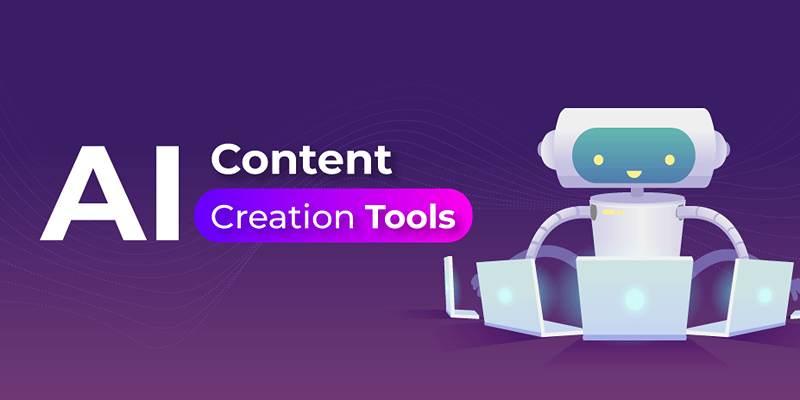AI (artificial intelligence) has changed how material is made and changed. There are now many AI tools available that are made to help writers make high-quality material quickly and easily. AI is an important part of the process of making content. It comes up with ideas, writes pieces, edits and improves the text, and more. This post talks about the AI tools that can be used to create and edit content, focusing on their features and advantages.
What Is AI in Writing?
AI in writing refers to the use of artificial intelligence technologies to assist with various writing tasks. These tools are designed to help with everything from generating ideas to polishing the final draft. AI can analyze data, suggest improvements, and automate repetitive tasks, making the writing process faster and more efficient.
AI-powered writing assistants can correct grammar, optimize style, and even generate entire paragraphs based on given prompts. With AI, writers can enhance their work, reduce errors, and save time on manual editing.
AI Tools for Content Creation
AI-driven content creation tools are designed to help writers produce content more quickly. These tools can assist with brainstorming ideas, outlining articles, and generating content. Writers can input basic details or keywords, and AI can expand those inputs into a full article, blog post, or product description.
Content generation tools are especially helpful for writers who need to create large volumes of content in a short period. By automating the writing process, these tools allow writers to focus on refining and personalizing their work.
AI-Based Writing Assistants
AI-based writing assistants are some of the most widely used tools in content creation. These tools offer real-time suggestions for improving grammar, spelling, sentence structure, and overall readability. AI writing assistants analyze the text for errors and suggest changes that improve clarity and flow.
These tools are beneficial for writers at all levels, as they provide immediate feedback and help avoid common writing mistakes. Some writing assistants even adapt to a writer’s unique style, offering more personalized suggestions to enhance the content.
Content Generation Tools

Content generation tools use AI to create text from scratch based on specific prompts or keywords. These tools are useful for content marketers who need to produce large amounts of text quickly. By analyzing keywords and topics,
AI can generate relevant content that aligns with the writer's goals. These tools can be used to create blog posts, articles, social media content, and product descriptions. AI-driven content generation tools are particularly useful when writers are experiencing writer’s block or need inspiration for new topics.
Grammar and Style Checkers
Once the content is written, editing is crucial. AI-powered grammar and style checkers help refine the text, ensuring it is free from errors and has a smooth flow. These tools scan the text for grammatical issues, punctuation mistakes, and style inconsistencies.
They also suggest improvements to make the writing clearer, more concise, and engaging. Grammar checkers are especially useful for writers who may struggle with punctuation or sentence structure, helping to ensure that the content is polished and professional.
AI in SEO Optimization
In the world of digital marketing, SEO (Search Engine Optimization) is essential for ensuring content ranks well on search engines like Google. AI tools can help optimize content for SEO by suggesting relevant keywords, ensuring proper keyword density, and structuring the text for better search engine visibility.
By using AI for SEO optimization, writers can create content that is both engaging for readers and optimized for search engine algorithms. These tools analyze search trends and provide suggestions to help content perform better in search rankings.
Plagiarism Checkers Powered by AI
AI-powered plagiarism checkers are vital for ensuring that content is original. These tools scan the text and compare it to a vast database of online sources to detect any similarities or potential plagiarism. Writers can use these tools to verify that their content is unique before publishing it.
Plagiarism checkers are essential for academic writers, journalists, and content creators who must ensure that their work adheres to ethical standards and does not unintentionally copy other authors' content.
Refining and Rewriting Content with AI

AI tools can also assist with refining and rewriting content. These tools take existing text and suggest ways to improve it, such as rephrasing sentences, changing word choices, or altering sentence structure. It is particularly useful when repurposing content for different formats or audiences.
AI can help ensure that content remains fresh and engaging, even when it is reused. Writers can also use these tools to make their content more concise and to the point, eliminating unnecessary words or phrases.
Enhancing Creativity with AI
AI can also be used to enhance creativity in writing. While AI tools are known for improving grammar and optimizing content, they can also help writers generate new ideas and creative concepts. AI-driven tools can suggest topic ideas, create compelling headlines, or even recommend new angles for articles.
These tools can help writers overcome writer’s block by offering fresh perspectives and inspiration. AI’s ability to analyze vast amounts of data can also provide writers with insights into trending topics, making it easier to stay ahead of the curve and create relevant content.
Conclusion
AI tools have transformed the writing and editing process, offering numerous benefits to writers. These tools help writers create content faster, improve writing quality, and optimize for SEO. AI-powered writing assistants, content generation tools, and editing software are valuable assets for writers at all levels. While there are challenges to using AI in writing, the benefits far outweigh the drawbacks. Writers can leverage AI to enhance their productivity, streamline their workflows, and create high-quality content more efficiently. AI is a powerful tool for anyone looking to improve their writing process and produce top-notch content.









